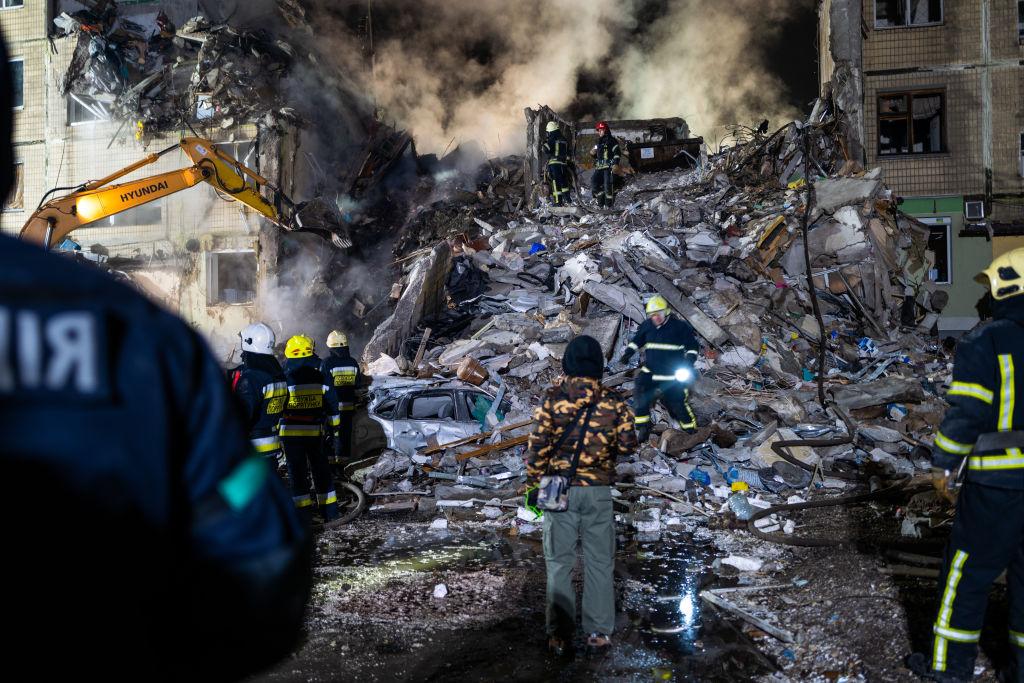
While wars invariably end, the underlying disagreements often remain. The peace is tenuous and interrupted by spasms of violence. The way a war ends—whether through outright victory, exhaustion or mutual deterrence—might make a difference, with exhaustion less likely to prevent future flare-ups than, say, the wholesale defeat of one party. But this is not guaranteed. It certainly does not mean that some types of peace are not worth pursuing.
There is no shortage of examples of once-warring parties—North and South Korea, Ethiopia and Eritrea, and Serbia and Kosovo come to mind—now balanced in a fragile peace. Japan and Russia have yet to conclude a formal end to World War II hostilities, owing to their enduring dispute over the Kuril Islands. And despite signing a truce in 1994, Armenia and Azerbaijan have not reached a permanent peace agreement on Nagorno-Karabakh; fresh clashes occurred as recently as last year.
While enduring tension and intermittent violence is obviously not an ideal outcome, the brutal, bloody, often prolonged wars that preceded these periods of fragile peace were worse. In fact, those who resist imperfect peace—remaining committed instead to a ‘just peace’ achieved, presumably, through the outright defeat of their opponents—often end up worse off. This has been true for the Palestinians. And Ukraine seems set to meet the same fate.
During his short visit to the United States last month, Ukrainian President Volodymyr Zelensky reiterated that his country will accept nothing short of Russia’s total withdrawal from Ukrainian territory, including Crimea. But, despite Ukraine’s extraordinary battlefield successes, and the West’s continued support for Ukrainian forces, it is unlikely to defeat its much larger invader outright.
This is partly because the West continues to calibrate its arms supplies to Ukraine. Yes, the US has now decided to deliver advanced Patriot missile-defence systems to Ukrainian forces—a move once viewed as too risky. And earlier this month, the US agreed to send an additional package that includes offensive weapons. But, to safeguard NATO unity and avoid escalation, President Joe Biden’s administration is avoiding delivering weapons that far exceed the capabilities of those already on the Ukrainian battlefield, including those provided by other NATO countries.
Decisions about arms supplies to Ukraine presumably also reflect the evolution of war politics in Russia. In recent months, a schism has formed within the Kremlin, with hardliners calling for a bolder strategy in Ukraine. This could push President Vladimir Putin—who has appointed yet another new commander, possibly in response to growing criticism—to escalate the conflict, cross red lines vis-à-vis the West and intensify repression at home. News about Russian units at breaking point, willing to desert or surrender, could also have a major impact on Putin’s domestic standing.
As the year began, Zelensky noted that Russia’s ‘bet may be on exhaustion’ of Ukraine’s people, air defence and energy sector. He is probably right. What he seems not to recognise is that the support of the US and its NATO allies can keep his forces going for only so long. As admirably as the Ukrainians are fighting, they are closer to exhaustion than their Russian opponents.
For starters, Russia’s pool of potential fighters is much bigger. Yes, Putin’s ‘partial mobilisation’ was met with public protests and an exodus of hundreds of thousands of potential conscripts. But Ukraine’s recruitment efforts have not been free of problems, either. Many who fled the war refuse to return to fight, and unwilling fighters are reportedly being recruited on the streets. In any case, Russia’s population is more than three times the size of Ukraine’s.
Perhaps more important, the war is being conducted overwhelmingly on Ukrainian soil. So, while relentless drone and missile attacks have demolished Ukraine’s infrastructure (resulting in direct losses of about US$130 billion as of last September) and inflicted untold misery on its civilians (leaving some 40,000 dead and 15–30 million displaced), Russians have continued to live their lives largely unaffected.
This is despite Western sanctions, whose immediate impact on the Russian population has been limited. In 2022, Russia’s economy contracted by just 3–4% and unemployment barely budged. By contrast, the Ukrainian economy has shrunk by 32%, and unemployment has surged to 35%. Given that Russia, like its Iranian ally, has plenty of experience circumventing sanctions targeting its defence industry, it has also managed to safeguard its defence industrial base and replace lost military equipment.
While sanctions will erode Russia’s economy in the longer term, time is on Putin’s side. He trusts that relentless strikes on infrastructure and civilian targets will erode Ukraine’s morale and capacity to fight, as domestic economic and political considerations weaken the West’s resolve. He likely views fiscal brinkmanship by US Republicans—including a deal that could limit defence spending next year—with considerable satisfaction.
Late last year, General Mark A. Milley, chairman of the US Joint Chiefs of Staff, urged Ukraine to take advantage of moments of Russian weakness to negotiate a solution, as pushing Russia out of Ukraine completely would be ‘a very difficult task’. His comments triggered a backlash among those who interpreted them as a sign that Putin’s strategy was working. But Milley’s advice is worth heeding.
Ukraine’s war endurance is likely to run out first. If Ukraine’s leaders refuse to negotiate until after they cross that threshold, they will end up far worse off than if they attempt to negotiate while they still have chips to bargain. Given the two sides’ deep and fraught shared history, it’s unlikely that any agreement will preclude further eruptions of violence. But as the US can attest, the era of glorious victories is over. Peace by exhaustion is better than no peace at all.